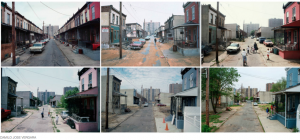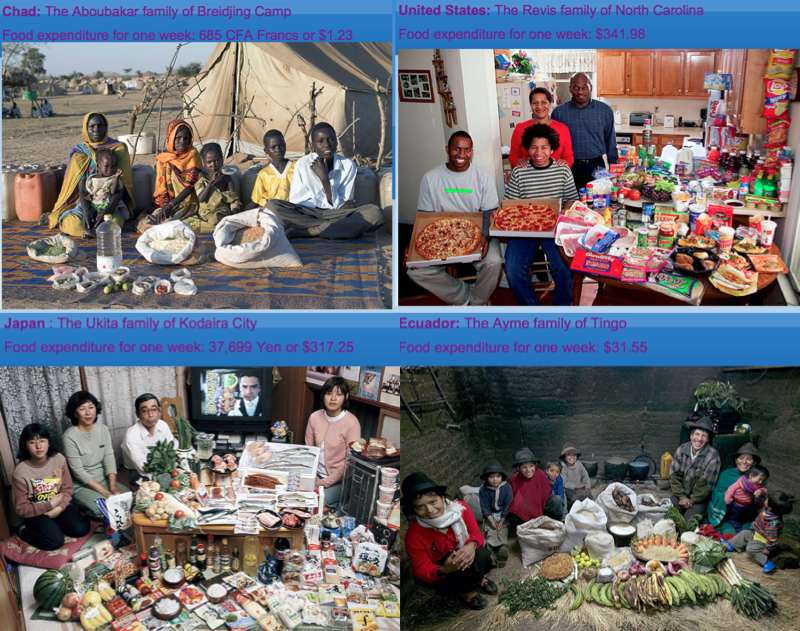 This image, a family photograph, taken by Hannah Hawkes Photography has gone viral. Mostly people are outraged.
This image, a family photograph, taken by Hannah Hawkes Photography has gone viral. Mostly people are outraged.
The image is a disturbing one, to be sure… a mother and her daughters with their mouths taped shut and bound with holiday lights while the father and son smile, declaring “peace on earth” and giving a thumbs up.
Why the outrage? Seems the family requested the picture and the photographer accommodated their request. What the family’s motivations were is unknown, as is often the case with images. Often the photographer’s intentions are also unknown, but in this case Hannah Hawkes decided to reveal her intentions/interpretations of the photograph. She thought it was humorous, a joke, and her subsequent post made this clear.
After being silent, now isn’t that ironic, I would like to speak! I have been called every name in the book, and have received some very hateful and vulgar comments and messages. I would like to say that as a female I do NOT and have never promoted violence to women! I do not support abuse, or the degradation of women. My controversial photo was taken by request by the family, and was in no way meant to promote abuse. This photo was taken with humor in mind, and was meant as a comical Christmas photo. I personally know this family, and have known them for many years. They are not abusive to their children in any shape or form. Also, I would like to add that no one was harmed during the process! So everyone have a very MERRY CHRISTMAS and MAY GOD BLESS you and yours!
 If the photograph is funny it is certainly an example of black humor, but there’s no indication that the family or photographer were so motivated or that sophisticated in their thinking about this image. (The claim no one was harmed during the process may indicate the photographer’s lack of awareness of what constitutes ‘harm’ and suggests a simplistic conception of the relationship between photographer and image-making.)
If the photograph is funny it is certainly an example of black humor, but there’s no indication that the family or photographer were so motivated or that sophisticated in their thinking about this image. (The claim no one was harmed during the process may indicate the photographer’s lack of awareness of what constitutes ‘harm’ and suggests a simplistic conception of the relationship between photographer and image-making.)
So, the outrage depends on the context… a family photographer who takes pictures her clients want taken, but has seemingly little awareness of the meaning of what she is doing. Given that, the outrage makes sense. Viewers see this image as misogynist because both those being photographed and the photographer lead us to a literal reading of the image.
Put this same image in other contexts, say an arts based investigation of gender relations, and the image turns from disgusting and outrageous to powerful and evocative. In the first instance the image promotes the subjugation of women, in the second the image reveals that subjugation. This revelation is powerful because of the juxtaposition of middle class bucolic family imagery with the silencing and restraint of women alongside the freedom of men. The family image punctuates the message by focusing on the inter-generational perpetuation of women’s subjugation… the young boy’s grinning thumbs up reveals the arrogance and smugness of the power men feel they have/have over women. Yesterday, The Guardian published a story titled The Year in Sexism: How Did Women Fare in 2015? and the bottom line is not so well. That story didn’t go viral, and fewer people were outraged… but the messages in the story and this image are consistent and complementary.
Images compel emotional responses and we can use them both to learn about social phenomena (like family, gender relations, southern cultural norms, and so on) and to communicate about social relations. The literal intention of the family and photographer, the support for the photograph expressed in comments on the FB page, the outrage of media outlets, and the image as found data all speak to the power of images in human experience and understanding. Powerful, never simple… never literal in what they may reveal.
 Camilo Jose Vergara’s project Tracking Time is a repository of images of poor, urban American built environments. Returning year after year, Vergara photographs the same buildings and streetscapes to chronicle the transformation of the built environment, transformations that often illustrate decay but sometimes redemption and revival.
Camilo Jose Vergara’s project Tracking Time is a repository of images of poor, urban American built environments. Returning year after year, Vergara photographs the same buildings and streetscapes to chronicle the transformation of the built environment, transformations that often illustrate decay but sometimes redemption and revival. 

 Follow
Follow











